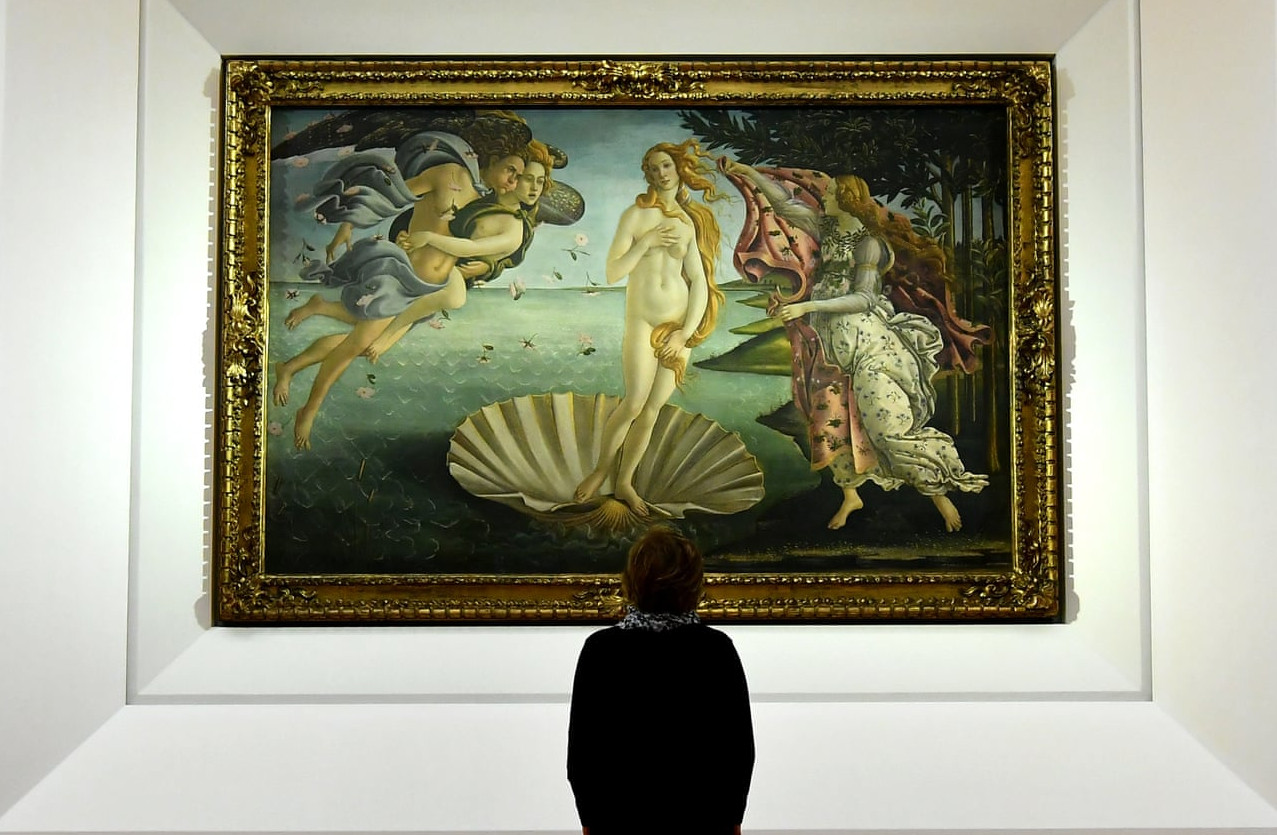Talking about the Caricature of Consciousness

It was in 1817 when the french novelist Stendhal got sick while admiring Uffizi’s masterpieces for which was coined the famous “Stendhal Syndrome”.
Think of that exact moment while he was watching Botticelli’s “Nascita di Venere”. He was standing up in front of the paint. Though there were people around him, he was completely seized by the aesthetic and the deep essence of such a masterpiece. He was scrutinizing every detail, every shade of color, every inclination of brush strokes. The crazy inner thoughts this gem suscitated in him - that we can’t ever know - eventually brought him dizziness and heart trouble. He was experiencing the personal impact of such treasure on the very extreme consequences.
Consciousness is one of the most ancient mental faculties, one of the least special to us, that has been developed in the history of evolution and yet its nature is currently incredibly debated. Why is it so important? Well, could you imagine Stendhal not having a full conscious experience? I would say not at all, rather I point that consciousness is what distinguishes us from a zombie or a person in a coma. Common sense definition from John Searle:
Consciousness consists of all states of feeling or sensations or awareness. It begins in the morning when you wake up from a dreamless sleep and it goes on all day till you fall asleep or otherwise you become unconscious.
You might be disappointed by the vagueness, but I reassure you that you should be prepared for ambiguities and counterintuitive explanations when it comes to the nature of mind.
The hard problem
The core of most of the disputes around consciousness, is the so-called “hard problem”, the one that faces the subjectivity of the experiences that make us feel alive and sentient. It is qualified “hard” for the reason that it is entirely a personal phenomenon and escapes the clauses of objective validation. This is why the book “Rethinking Consciousness” written by M.Graziano has this paradoxical headline “A Scientific Theory of Subjective Experience”, how one can match science with subjectivity?
The book explains the attention schema theory (AST) for consciousness, but why do we need a theory in the first place? Aren’t we supposed to be driven by an ethereal and inexplicable essence that according to many is even beyond our comprehension? Not for Graziano, nor for the curiouses of the mind, philosophers and scientists, that actually draw our vigilant awareness as a caricature, an amusing effect of the unsettled account of our high level of attention. If this is ambiguous and confusing, well… your are already in my good company!
Objective vs Subjective
I mentioned the combination of science with subjectivity that shows up quite unsound, but in this context the rules apply differently than in other fields. Consciousness creates a mind dependent reality and its existence is relative to the subject. The Stendhal’s story tells us that there are not just two entities, the writer and the paint, but also the relation between them that accounts as the intimate, personal, private experience Stendhal observes while watching Botticelli’s frame. Let’s see how objective claims about subjective domains could be interpreted through the lens of AST.
Attention
The way we are confronted to the world is a representation of what we think the world is. The brain approximates the physical reality, all the irrelevant details are silenced in order to not overwhelm our reasoning with useless information. The mechanism behind that is called attention and it has very precise connotations. Attention is a process of enhancing or inhibiting signals in the brain. The physical sensations, thoughts and memories are magnified or contracted for maintaining our cognitive skills operative. An unfortunate correlation with the failure of this regulator is found on the patients affected by epilepsy,
the disease that springs out of the impairment of neuron activity.
Try out the selective attention test and check your ability to hide features from the context.
Attention is usually weighed as totally under our control. When we listen to a conversation among several others, we deliberately remove unwanted voice from our attention, but it also works in the background without our consent, like in an experiment applied to pedestrians engaged in tasks such as talking with a companion of using the smartphone. When they encountered an obstacle in their way, nobody collided onto it as well as nobody realized that object was misplaced as an obstacle. Their involuntary attention, the one we are not aware of, was doing its job on skirting obstacles while being focused on other activities.
While there could be attention without consciousness, the reverse is not true. It seems the attention plays a lower level role, in the way that consciousness actually governs where to focus on. This interpretation contradicts the erroneous idea of confusing attention with consciousness.
Brain as model maker
The brain is a model builder. It creates and manipulates representations of what is tangible and intangibles like emotions, behaviours and thoughts, so we can depict them effectively for our purposes. When we look around, the real job of visual system is not to take the world as it is, but to identify those opportunities as actions. Take for example those chairs, they are so different one each other and generally, far from the idea of chair but we still recognize them. What characterizes a chair, or any other object, is not its form, but its functionality we assign to them. They are called affordances.


The models our brain build are a simplified version of reality. The white color appears to us a pure tone and unspoiled by any other color. Since Isaac Newton’s discovery, we know that the whiteness is actually our brain’s construct. The white is a mix of colors, exactly opposite of what it seems to be. It is a kind of illusion.
Take another form of representation: our body. It is sketched with a useful and yet approximated model reflected in the brain. Any physical task might involve dozens of muscles and joints coordinated perfectly. Consider yourself while hanging a beautiful frame on the wall. While you are focused on hammering the nail, the body schema hides to you all incredible complexity of such a task and let you to concentrate your attention in the high level of purpose.
Sometimes the body schema reveals its imperfections like in the experiment of the rubber hand. When with a simple but effective trick it is possible to dribble the body model and a rubber hand can take the place of the original one even if we certainly know that’s false.
Consciousness as a caricature
The mind makes-up not just archetypes for the concrete world, but also for our inner subjective experience of consciousness.
The feeling we have about the private, pervasive, global sensation of awareness is nothing more than a mere caricature.
But wait a minute. If I consciously seem to have a conscious experience, I am conscious!
If a crew of neuroscientists come to me and they say “you are not conscious, you are a very cleverly constructed robot” I won’t agree on it for a moment.
My experience is real. As Descart said: you can’t doubt the existence of your own consciousness.
The definition of consciousness as “illusion” should not be interpreted as a mirage or something that does not exist, rather it is what our brain says about the model we have of our attention and it is far away from what it appears to be. it might be compared to the faces we fantasize sculptured in the clouds, they don’t exist except in our imagination. This is why the view of consciousness throughout the lens of AST is counter-intuitive. The perception of being conscious is a simplification of all electro-chemical signaling with an amazing coordination.
The AST is the ancient highly simplified model of our attention that has a fundamental purpose.
AST helps to focus attention. It directs purposeful actions towards goals.
It is a powerful force in our mind that restlessly focus into objects, ideas, feelings. You are aware of it when you have a clear understanding of what you are doing or thinking.
Consciousness is a cartoonish effect of our attention’s model.
Comments